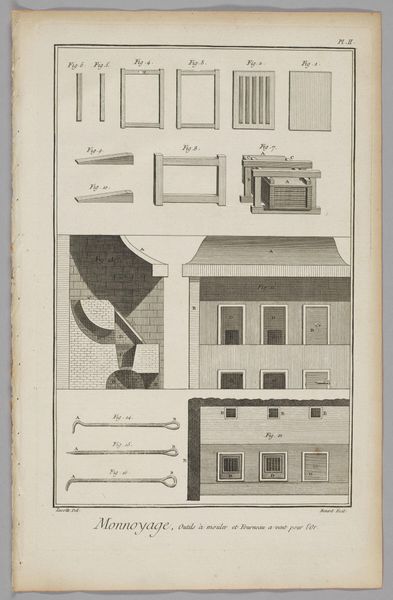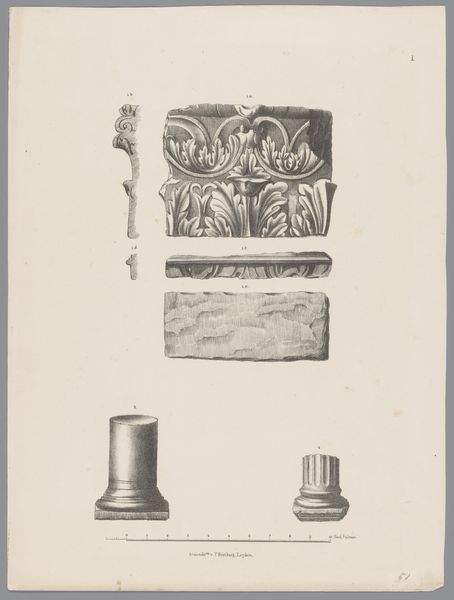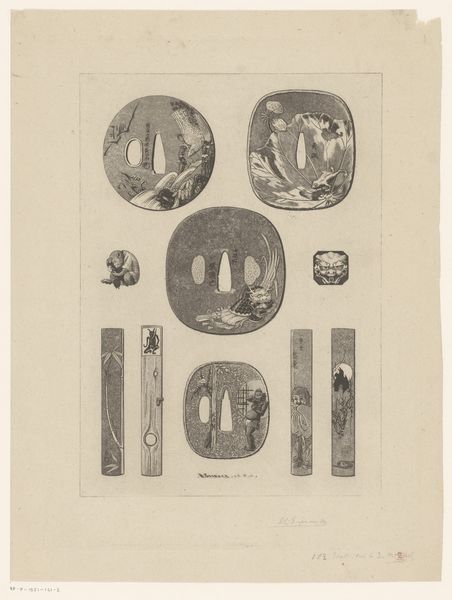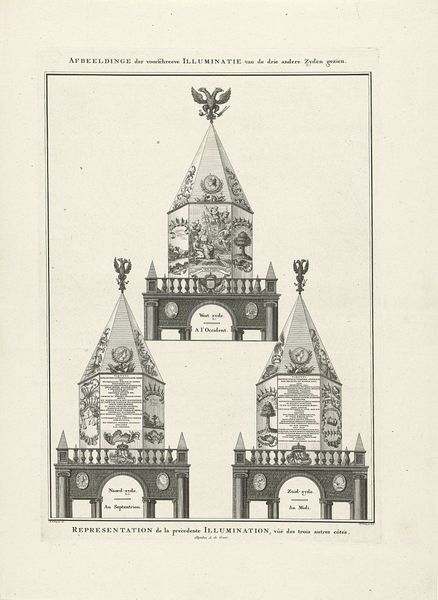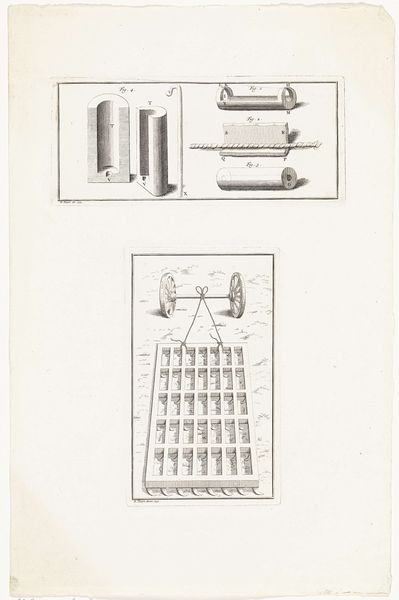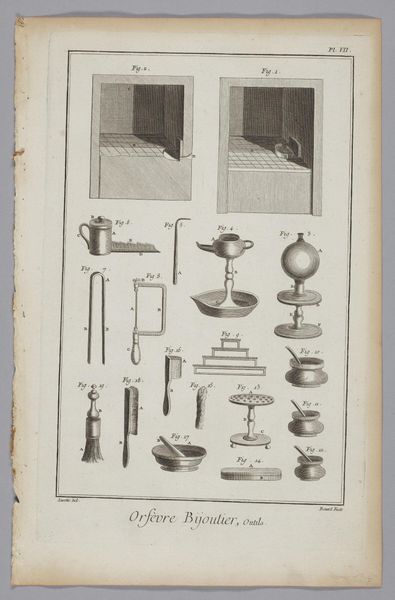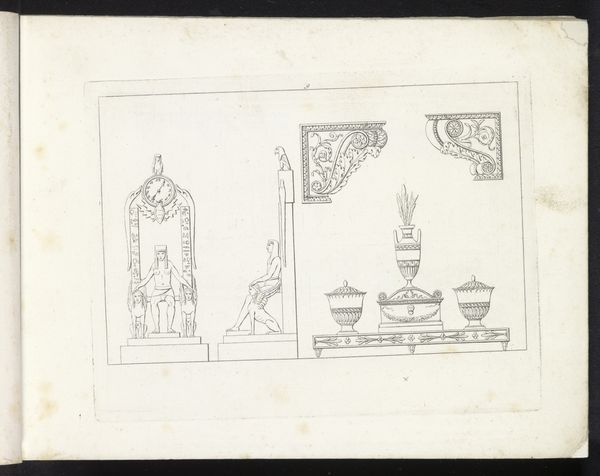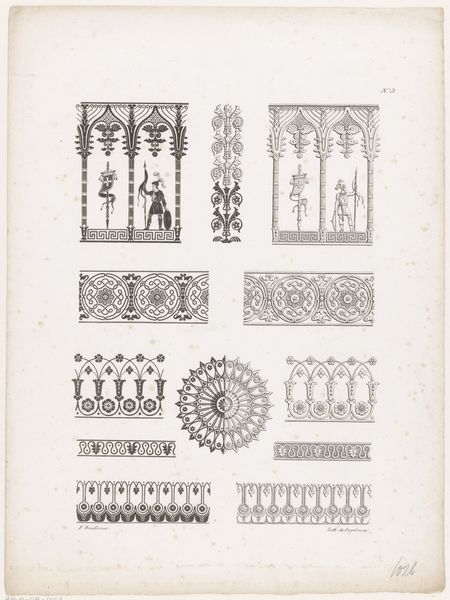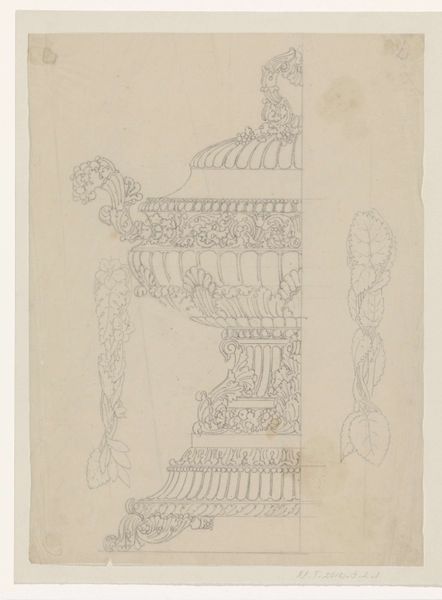
Voorwerpen die bij een joodse besnijdenis dienst doen / De boekrollen van de Thora 1725
0:00
0:00
print, engraving
#
baroque
# print
#
old engraving style
#
engraving
Dimensions: height 335 mm, width 216 mm
Copyright: Rijks Museum: Open Domain
Curator: Here we have a 1725 engraving by Bernard Picart titled "Objects used during a Jewish circumcision / The Torah Scrolls", currently held at the Rijksmuseum. Editor: It has a solemn feel, wouldn’t you say? Quite an austere presentation of…sacred instruments. The grayscale adds weight to each line, almost a sense of history being etched, quite literally, into the paper. Curator: Indeed. Picart masterfully employs the engraving technique, highlighting both utilitarian and ceremonial objects with equal precision. Note the upper register presenting instruments—the dishes, knives, cloths, even a vessel possibly for liquids—each meticulously detailed. Then below, observe the careful delineation of Torah scrolls, complete with finials and their protective mantle. Editor: What strikes me is the…contrast. We have the everyday—knives and cloths—presented alongside items resonant with tradition. The Torah scrolls, with their adornments, seem worlds apart from the plain surgical tools. Almost makes you ponder the intertwining of ritual and practical necessities. Curator: Precisely. And it is through that juxtaposition, articulated visually by the contrast in ornamentation and finish, that Picart evokes contemplation about religious ritual. The clean, unwavering lines underscore the permanence and precision integral to these observances. Editor: Absolutely, there's also the symbolic dimension. These aren't merely illustrations. They embody the enduring aspects of tradition across time and space. Those Torah scrolls… I wonder, could they speak of the generations who have held them? Curator: Perhaps Picart was inviting the viewer to consider precisely that—the tangible connections across time and community forged through objects. And his masterful skill allows us centuries later to delve deep into the cultural richness embodied within this tableau. Editor: Agreed. It's rare that something so deliberately rigid can ignite such free-flowing reflections. I guess in its way, it reveals art's own kind of enduring ceremony. Curator: Aptly said.
Comments
No comments
Be the first to comment and join the conversation on the ultimate creative platform.

